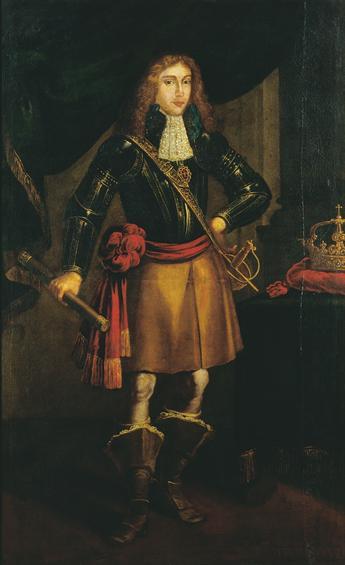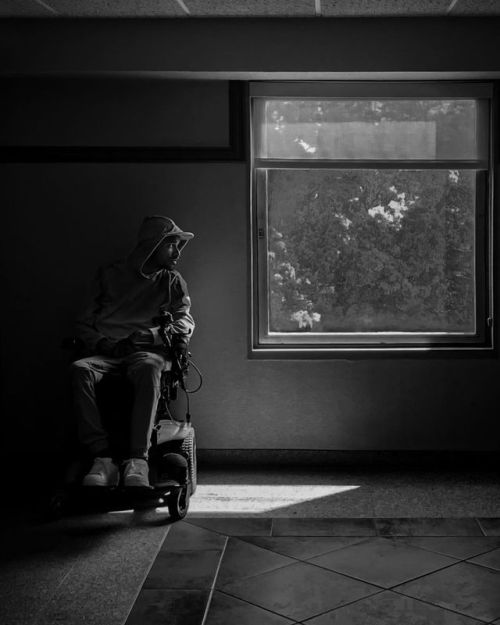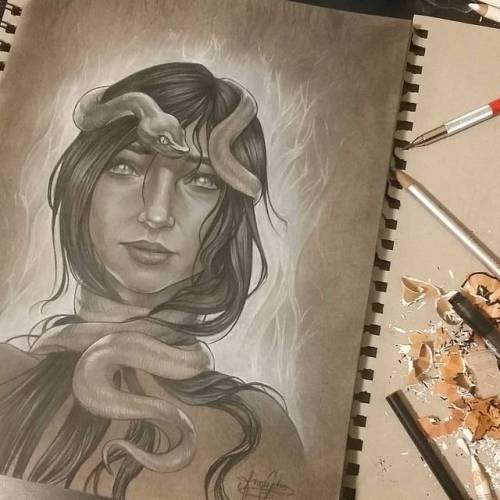#paralyzed
Afonso VI of Portugal
21 August 1643 – 12 September 1683 (40)
At the age of three, he suffered an illness that left him paralyzed on the left side of his body, as well as leaving him mentally unstable.
Post link
Caption from sitting_pretty on Instagram:
When I was a little girl, I saw myself as beautiful. Like fairy-princess riding a glass carriage to the ball kind of beautiful. I woke and ate and dressed and played and slept believing this.
When I got a bit older, I started to pick up on the way people looked at me. They rushed to help me, seemed sad or even proud when I smiled, and stared at my paralyzed legs. I noticed that none of the fairy-princesses on the screens looked anything like me. And this is when I started to piece it together – girls that looked like me were usually pitied, could maybe become inspirational, but were never beautiful. So I found ways to hide myself, obscure my imperfections, point the camera away from my paralyzed legs.
But here I am, thirty years old, finding my way back to the little girl who saw herself as beautiful, who wasn’t afraid to put on a lacy floor-length dress, just to go to the library, who didn’t try to hide, who felt worthy of admiration. Day by day, I am building my beauty uniform – the space I slip into that invites me to relish in my own particular beauty, to be seen without shame.
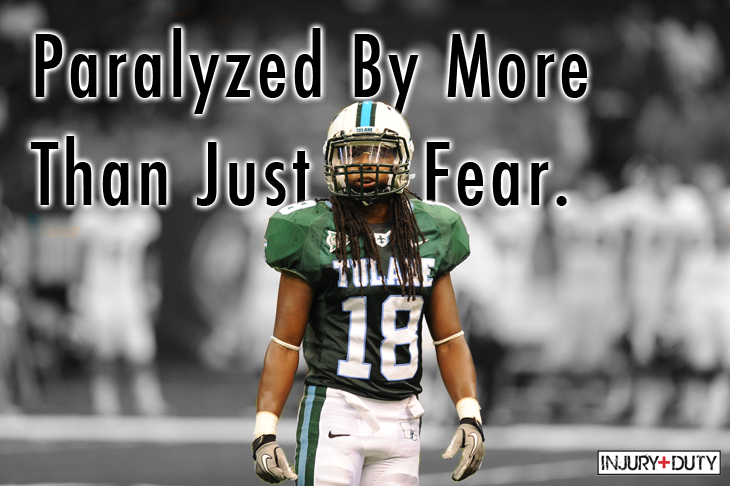
On September 8th 2012, TulanesafetyDevon Walker (21 years-old) was left paralyzed after he fractured his spine in a head-to-head collision with a teammate during a game in Tulsa (video: click here). Since then, we’ve overheard people talking about his injury, whether it be in the hospital or at the grocery store. And, the one big thing that has seemed to connect the conversations: Misinformation. So, we decided take a closer look at spinal cord injuries in football, in hopes that you (both parents and players) might find something here helpful.
SPINAL ANATOMY:Your spinal cord is directly connected to your brain. If you were to remove all that surrounded your brain and spinal cord (all the skin, muscle, bone, etc.) the spinal cord would sort of look like a ponytail dangling from the base of the brain. Now, if you imagine your spinal cord is a cooked spaghetti noodle (which is actually pretty close to its real consistency), imagine putting that noodle through the opening of one of those bendy straws (see diagram below). What you would now have is not some bullet proof protection around the noodle, but you’d definitely have protection around that noodle making it less likely to be cut or torn when it’s being hit. That is essentially what your spinal cord is, a noodle with a thick covering (the nerd-term for the thick covering is the “dura mater”), hanging from the base of your brain.

Thespinal cord itself serves as a “highway for information” that carries information from the “outside world” (for example, pain from touching a hot stove) to the brain and also carries information being sent out from the brain to the rest of the body (for example: the command to extend your arm and reach for something). All of your thoughts that eventually become actions (moving your arms, legs ect.) and even some things you don’t ever have to consciously “think” about (blood pressure, heart rate etc.) are all (at least partly) controlled via commands form different centers in your brain. Those command signals travel down from your brain and to their eventual targets. Being that this cord is such an important structure, you’re body is designed in a way that it tucks your spinal cord behind a lot of protection, mainly your vertebral column (aka your backbone or spine).
The spine itself isn’t just made up of one long bone though, instead it’s made up of vertebrae. Think of the vertebrae as individual building blocks stacked one on top of the other, with padding in-between each block (the pads are called “Intervertebral discs”, in nerd-speak), which are soft gummy-bear-feeling type discs made to adsorb the impact between your vertebrae.

Youractualspinal column is made of bone and is divided in to 3 “sections”:
1. Cervical spine (your neck; you have 7 vertical vertebrae or “blocks”)
2.Thoracic spine (your mid-back; you have 12 vertical vertebrae )
3.Lumbar spine (your lower-back; you have 5 vertical vertebrae )

The vertebrae (the “blocks”) become larger as you go further down your spine, and there are a couple of reasons why this is the case. First, the lower vertebrae have to support more of your body’s weight, so it makes sense that they’d be “beefier” and more heavy-duty compared to the higher vertebrae in your neck, which most often only have to worry about holding up the weight of your head. The second reason the vertebrae in your neck are smaller is because as humans we depend on our eyes and ears to keep us aware of our surroundings, and those eyes and ears are attached to your head (obviously). Each time we turn our heads, a complex network of muscles, tendons and ligaments that are attached to our vertebral column pull on the specific vertebrae we need to move, which in turn helps to turn our head. If those vertebrae were big, they’d require a lot of energy to pull on and we’d be straining ourselves every time we wanted to simply turn our heads.
Now, going back to our bendy-straw and blocks analogy, if you imagine the bendy part of the straw being your neck, you’ll realize that you have a lot of mobility there. But, your neck is a lot thinner than your chest or waist is round, which again, is great for mobility but not so great in terms of protection for your spinal cord. All that freedom to move around makes your neck more susceptible to being pushed or pulled too far, which brings back to Devon Walkers injury.
The Specifics Of Walker’s Injury: Devon Walker suffered a fracture of his cervical spine (a “broken neck”). As of the time this article was written, where exactly along his cervical spine his injury happened has not been made public.
Early Reports:Several news sources were reporting that Devon “stop breathing” after the injury and that he required CPR while on the field. We have not been able to confirm if Devin did in fact stop breathing, or if his breaths only became very shallow (for reason’s we explain later).
Understanding The Injury:As we explained earlier, the spinal cord both caries information from the “outside” to the brain and also sends information from the brain to the rest of the body. Along the spinal cord there are “exits” where “spinal nerves” branch off, think of these as “off-ramps” from the “main highway” (the main highway being your spinal cord). Each spinal nerve, depending on which level it makes its exit, is responsible for carrying signals to things in that general area.
As you now know, the spinal column is divided into three sections (cervical, lumbar and thoracic), and each of these sections have a specific number of “exits” where spinal nerves branch off (see diagram below). In Devon’s case, we know that the injury was to his cervical spine (vertebrae in the neck). As you can see in the diagram, the signals that exit the spinal cord at that level are those that control the head, neck, upper arms, hands and breathing muscles (namely the diaphragm); the diaphragm is a large muscle located “underneath your lungs” that allows you take a deep breath).

Had Devon’s injury only damaged the spinal nerves at that level, he’d most likely have use of his body below the area that was damaged, because the spinal cord itself would have been left undamaged. Unfortunately for Devon, he was unable to move his arms and his legs after the accident, which suggest that the injury was bad enough that all “signals” below the level of his injury were “cut off”, meaning that the actual spinal cord (again, the main “highway”) itself was damaged and not just the spinal nerves.
How Did This Happen?: A lot of changes (in the rules, anyway) have been made in the NFL over the last several years in regards to tackling, and a lot of those changes have centered around limiting the times a player is allowed to make a helmet-to-helmet hit on another player. But, what people fail to mention most of the time is that these rules are not only beneficial to the player being hit, but they’re also beneficial to the player doing the hitting. It’s a lot like boxing gloves in the sense that most people think the gloves were put in place to protect the guy whose head is being punched (and yes, they do help him/her, too), when in reality the gloves were introduced to protect the punchers (relatively weak) bones in their hand to prevent them from breaking.
The NFL and youth football organizations such as USA Football have recently made strides to educate players, coaches and parents about the importance of “keeping your head up” while making a tackle, and here’s the science behind why it’s so important:
When the neck is in its “natural” position it has a (healthy) curvature to it, it’s not a “straight stack” (in doctor talk the cervical spine is said to be “extended as a result of normal cervical lordosis”). When the head is lowered (i.e. when the neck is flexed) about 30 degrees the cervical spine straightens, and that normal curvature is lost. Instead what you have now is a straight line (see figure below), and as it turns out loss of that natural curvature in the neck at the time of impact is crucialto leading to injury.

When players use proper tackling techniquethe cervical spine is able to effectively dissipate (“scatter”) a lot of the energy from the hit off into the muscles of the neck and shoulders, and some of that force can also be used to bend and flex the neck in ways that aren’t harmful to the body. However, when a player decides to “drop their head” to make a hit the curvature in the neck is replaced by a straight-line, and all of that energy that could have been scattered in all the ways we mentioned above, has to now be absorbed almost entirely by bones, the disks, and the ligaments in the neck. With the bones in the neck now stacked one on top of the other, the result is that the cervical spine is compressed between the rapidly moving head on one end, and the force of both the body it’s connected to and the one it’s about to smash into.
With nowhere for all of that energy to go, the straightened cervical spine buckles, and (as in Devon’s case) can break under the pressure. Now left unprotected, the soft spinal cord is susceptible to be being stretched, pinched, torn or even severed (see figure below).

Where To From Here?:Football is a violent game, period. And, there is no amount of Nerf in the world that is going to eliminate all football injuries, we know this. But, teaching the up and coming young players proper technique is one step in the right direction and we hope that by helping you have a better understanding of the science and anatomy behind it all that you’ll feel more confident to step in and correct a player, or even a coach, who is not doing his or her part to protect kids (or adults for that matter). As for those that take the ridiculous stance that all these rules are “making the game boring and soft”, here’s a prime example of a bigandexciting hit being made, all while using proper technique. But you want to know what is most impressive about the hit? Both players got right back up, and lined up to do it all again. Now that’sfootball!
Show Some Love, “Like” Us On: FaceBook
And Follow Us On Twitter: @Health_ID
Paralyzed Monarch
“Tell me, human, is it honorable to paralyze a king before you kill him?”
For Month of Fear prompt of “Paralyzed”.
Post link
New @paralyzedband.official album arrived the other day @thecosmicpeddler!
@stonefly_records congrats on your first release, you did a great job with this one!
#stoneflyrecords #thecosmicpeddler #paralyzed #paralyzedband #vinylcommunity #vinylcollector #vinylcollectors #vinylrecord #vinylrecords #vinyljunkie #vinyljunkies #rockalbum #rockalbums #rockmusic #stonerrock #bluesrock #hardrock #rocknroll #rockandroll #recordcollector #recordcollectors #records #musiccollector #musiccollectors #vinyl #stonerblues #heavybluesrock
https://www.instagram.com/p/CWgjnEVlaGx/?utm_medium=tumblr
Post link
A breakthrough neuromodulation system rapidly restores motor function in patients with a severe spinal cord injury (SCI), new research shows.
The study demonstrated that an epidural electrical stimulation (EES) system developed specifically for spinal cord injuries enabled three men with complete paralysis to stand, walk, cycle, swim, and move their torso within 1 day.
SCIs involve severed connections between the brain and extremities. To compensate for these lost connections, researchers have investigated stem cell therapy, brain-machine interfaces, and powered exoskeletons.
However, these approaches aren’t yet ready for prime time.










Tamara Abdalla Puia is a stunning 29 year old model from Indaiatuba, a city in the Brazilian state of São Paulo.
Tamara was born with spina bifida myelomeningocele. This is a condition in which there grows a malformation in the spine during pregnancy that causes damage to various parts of the spinal column, including the spinal cord. As Tamara’s spinal cord was completely severed, she never had any feeling in her legs and has been paralyzed from the waist down her entire life.
As long as everyone around her can remember, Tamara always loved photography. She really liked taking pictures but also loved being in the spotlights herself. Tamara always got lots of compliments on the photos she shared on her social media and slowly but surely she started doing more and more modeling jobs. She now shares lots of her projects on Instagram where she now almost has 3000 followers. If you’re interested, feel free to check out the link down below!
Besides photography and modeling, Tamara often spends time with friends and family, loves a day at the beach and really likes to swim. She also loves dancing, listening to music and regularly goes to concerts.
Tamara really doesn’t mind living with spina bifida. She’s capable of doing whatever she wants and lives completely independent from others. She never really talks about her disability but did remark that —even if she had the choice— she wouldn’t choose to live her life any other way!




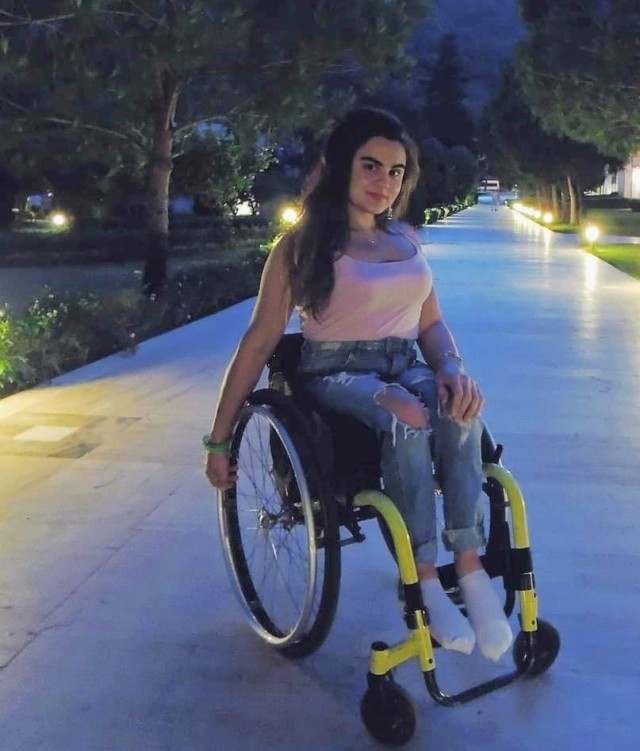


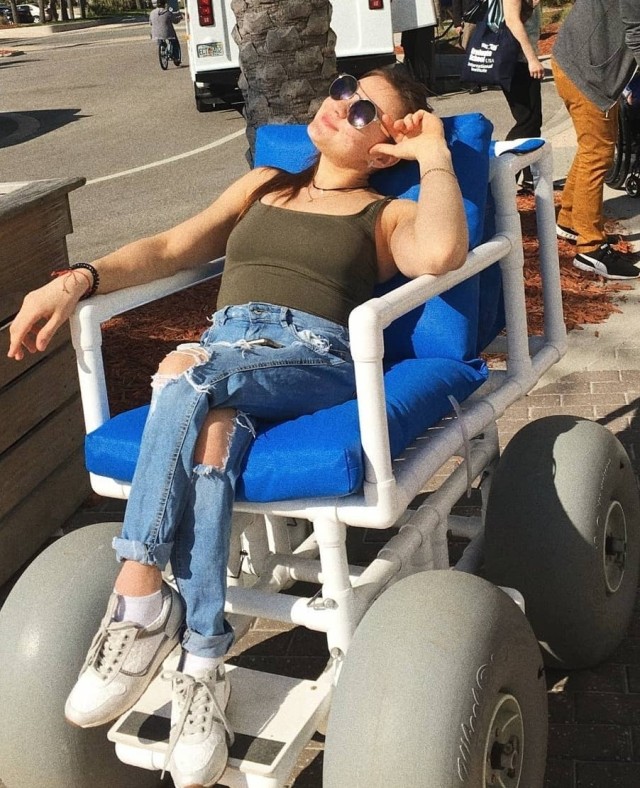


Nursina Galieva is a 27 year old wheelchair dancer and model from Moscow, the Russian capital.
She was born with spina bifida myelomeningocele. This is a condition in which there grows a malformation in the spine during pregnancy that causes damage to various parts of the spinal column, including the spinal cord. It can range from mild to severe, depending on the shape, size, and location of the malformation. In Nursina’s case, the spinal cord became completely severed. Because of this she never had any feeling in her legs and she has been paralyzed from the waist down for all her life.
Nursina always had a very positive outlook on life and she’s always been known for her spontaneous and outgoing character. As a child, she had lots of friends with whom she loved to play and hang out with. As Nursina grew older she also developed a growing interest for music, and at parties she was never shy to dance along with everyone else.
In 2011, a friend suggested that Nursina should try the sport of wheelchair dancing. “Right away I understood that I wanted to take it up. Everything came together for me, and I found a partner practically right away.” It didn’t take long before she decided to start dancing competively and she now dances in tournaments throughout Russia and Europe. Her biggest achievement as of today was winning a bronze medal at the 2019 World Dancing Championships in Bonn, Germany.
While dancing always comes first for Nursina she also loves fashion, modeling and photography. She was crowned Miss Independence in 2013 and won the “Pearl of Tatarstan” beauty contest, held in the Russian city of Kazan!
Besides all this, Nursina loves to play pool, swimming, going to the beach or go on road trips with her car. She is also an avid traveler and doesn’t shy back for the more extreme activities like skydiving, which she has already done for three times!










Wesley Vinícius dos Santos is an amazing 23 year old wheelchair racer and paraskiier from Jundiaí, a city in the Brazilian state of São Paulo.
Wesley has been a wheelchair user for all his life because of spina bifida myelomeningocele. Myelomeningocele is a congenital condition in which there grows a malformation in the spine during pregnancy, causing damage to the spinal cord. This left Wesley completely paralyzed from his waist down for all his life and he never had any feeling whatsoever in his legs.
As in his own words, Wesley considered himself lucky that he never knew what it was like to walk, stand or use his legs in any way. He was a very sociable kid and always had lots of friends. The fact he had to use a wheelchair to get around never really bothered him, nor his surroundings.
Wesley had a very active and energetic personality and around the age 12, he started wheelchair racing. Ever since his first time on the track, he immediately loved it and by now, he gathered an impressive amount of medals and trophies in the sport!
Around the age of 18, Wesley was introduced to para-skiing by Cristian Westemaier Ribera, a good friend of his whom I featured earlier on in my blog. Wesley really got a kick out of skiing and now regularly trains on slopes all over the world with Cristian and with female athlete Aline Rocha!
Unfortunately, Wesley hasn’t been selected for the Paralympic Games in Tokyo later this year, but he has a good chance of competing in Winter Paralympics in Beijing, China in 2022!
If you’d like to follow Wesley on Instagram, you can do so by clicking the link right here!










Junior França is an amazing 25 year old paralympic weightlifter from Brazil. Junior was born and raised in the city of Natal, in the Brazilian state of Rio Grande do Norte.
Junior has been a wheelchair user for all his life because of Arthrogryposis Multiplex Congenita(AMC). This is a congenital condition which causes joint contractures, stiffness and muscle weakness in some or all of one’s limbs. Fortunately, only Junior’s lower limbs were affected, albeit in a very serious way. Junior has never been able to use his legs in any way and because his knees and ankles have always stood in a completely fixed position, he has some slight deformations in both his legs. Moreover, his leg muscles eventually completely wasted away and the bones in his legs became severely weakened, a condition also known as muscular atrophy.
As Natal has always been poorly accessible, Junior’s youth often had its challenges. Public transportation wasn’t adjusted for wheelchair users, sidewalks were often tough to navigate and buildings only seldom were equipped with elevators. Frustrating as it sometimes was, the tough streets Junior conquered with his wheelchair and the stairs he regularly had to climb with only the use of his arms made his upper body unbelievably strong!
Junior started weightlifting at the age of 18 after being encouraged by a good friend and after only two years, he already represented Brazil in the Paralympic Games of 2016 in Rio de Janeiro. Now, his goal is set for getting some great results at the 2021 Paralympic Games in Tokyo, for which he has recently been selected!
Besides his athletic aspirations, Junior graduated from a degree in law school two years ago and last year, the love of his life and fellow paralympian Maria Clementino gave birth to a beautiful son!
If you’d like, you can follow Junior on Instagram or you can visit his official Facebook page by clicking the link down below!




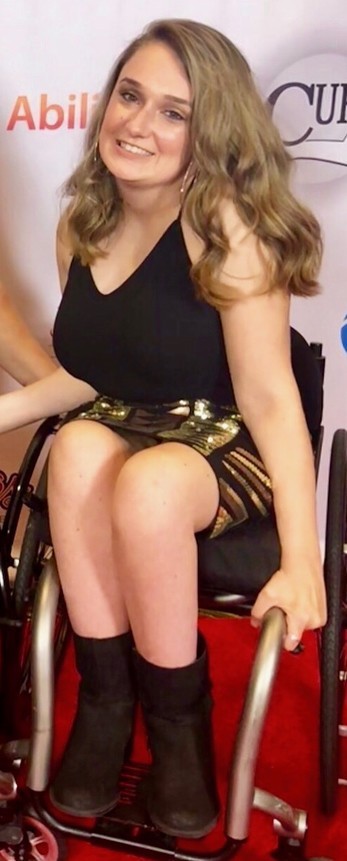





Shannon Kelly is a 27 year old journalist, writer and travel blogger who wrote lots of articles and stories about her trips around the world!
When Shannon was just 2 years old, she was diagnosed with a spinal tumor. Fortunately, the tumor could be completely removed. Nevertheless, her spinal cord was damaged in such extent that it left her completely paralyzed from her waist down.
Ever since Shannon was young, she had an adventurous spirit, a passion for nature and a huge love for animals. After graduating from high school, Shannon wanted to get out of her comfort zone and travel abroad before starting college; “I was 17, in a wheelchair, and a newbie to international travel, but I didn’t want to let any of these things stop me from having the adventure of a lifetime”, She says about the beginning of her very first trip to Costa Rica. This turned out to be such a success that she has made many more since then! If you’d like to know more about all of Shannon’s travels, I can really recommend you to read the story she wrote for HuffPost! ⬇️
My Perspective on Inclusive Study Abroad
Shannon soon felt that all the great experiences she had during her travels were worth sharing with the rest of the world. That’s why she started writing a blog, and it didn’t take long before some of her stories were published in various newspapers and magazines!
Many of Shannon’s articles are about her own experiences as a traveler in a wheelchair, which are packed with useful tips and tricks for people with disabilities! Nonetheless, she also wrote some great stuff for the ‘general’ traveler like sightseeing ideas and 'things to do’. If you’re interested in reading some of Shannon’s work, you can visit her website, where you’ll find a portfolio with references to everything she wrote! ⬇️










Elizabeth Becker is a very talented 21 year old wheelchair basketball player from Charlotte, North Carolina.
Elizabeth has been a wheelchair user for all her life because of spina bifida myelomeningocele. Myelomeningocele is a congenital condition in which there grows a malformation in the spine during pregnancy, causing damage to the spinal cord. Because of this, Elizabeth has been paralyzed from her waist down for all her life and she never had any feeling in her legs. She also has a slight degree of scoliosis.
As a child, Elizabeth came into contact with a woman who asked her if she had ever played wheelchair basketball and if she might be interest in giving it a try. At first, she wasn’t particularly enthusiastic about this idea, but after some encouragement from her parents, Elizabeth visited a training of their local team, the Charlotte Rolling Hornets. Totally unexpected, she immediately loved it and it soon became apparent that she even had quite a bit of talent for it.
After graduating from high school, Elizabeth went on to follow a study in Broadcasting at the University of Texas at Arlington, where she had the opportunity to join their collegiate wheelchair basketball team, the Lady Movin’ Mavericks.
In 2019, Elizabeth represented the National U25 Women’s Wheelchair Basketball Team. Later that year, she and her team became world champion in the IWBF’s Women’s U25 Wheelchair Basketball World Championships in Thailand!
Elizabeth’s great performances in the U25 team eventually contributed to a place for her in Team USA, and if all goes well, she will represent her country in the upcoming Paralympic Games in Tokyo later this year!
If you’re interested, you should absolutely check out this great interview Elizabeth had with the “Women in Sports” podcast, where she talks about the sport of wheelchair basketball and what it means to her;
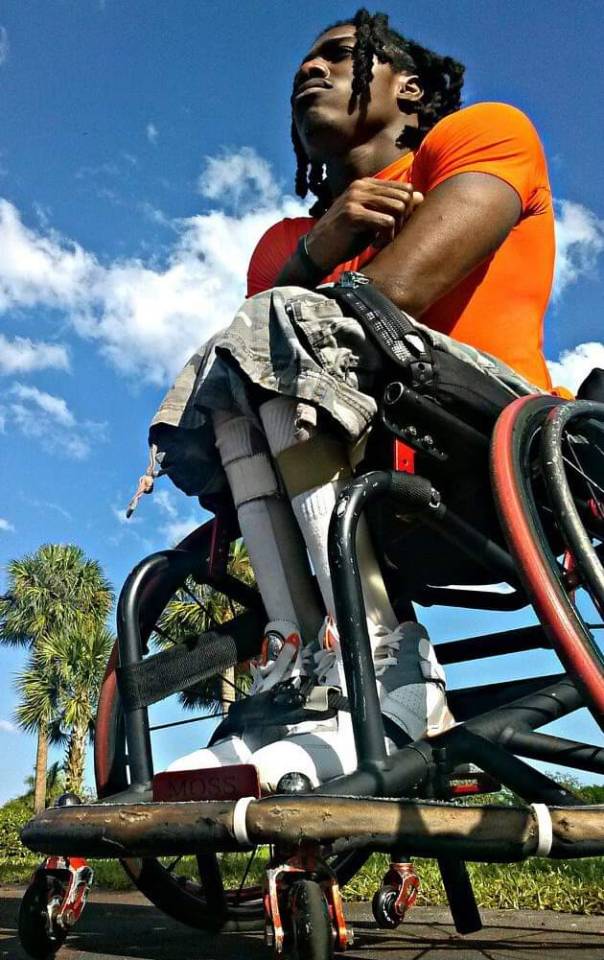









Jeremie Thomas is an amazing, 32 year old, wheelchair basketball player and musician from Pompano Beach, a city in the Southern part of Florida.
Before he was born, his mother was involved in a car accident. As a result of this, Jeremie was born prematurely, weighing just two pounds and eight ounces. After delivery, he was diagnosed with both spina bifida and Cerebral Palsy. Because of this, Jeremie has been completely paralyzed from his waist down for all his life and he never had any feeling in his legs.
Despite his premature birth, Jeremie grew up in excellent health and his upper body developed exceptionally well.
Jeremie never let his disability stop him and he developed an interest in sports and music at an early age.
Jeremie always liked to play all kinds of games with his friends and he didn’t shy away from a game of American football in the local park. Around the age of 12, Jeremie was picked to play on a friend’s team and scored the game-winning “hail mary” (long pass) touchdown. In awe of what they had all witnessed, his friends cheered in excitement and chanted “WHEELCHAIR MOSS, WHEELCHAIR MOSS…”, referring to Jeremie’s favorite football player, Randy Moss.
Around the age of 18, Jeremie started playing wheelchair basketball for the Miami Heat Wheels. Already at the first training, he impressed the coach with his ability to move in his chair along with the ball. He also recognized his speed, toughness, and aggressive defense. After playing Division III wheelchair basketball for three years (and loving every minute of it), he was recruited by the Oklahoma State University Spokes , giving him the opportunity to take his game to the Collegiate level. After playing for two years in Oklahoma, Jeremie returned to his home team, the Miami Heat Wheels, for whom he competed ever since.
In 2016, Jeremie was also featured in the award-winning documentary “The Rebound - A Wheelchair Basketball Story,” which portrays “his” team, the Miami Heat Wheels.
Besides his activities on the basketball court, Jeremie is an aspiring musician who writes catchy, witty rap songs and regularly performs at a local nightclub.
If you’d like to know more about Jeremie, you can check out his Instagram page right here or you can visit his Facebook page by clicking the link down below ⬇️










Danny Higgins is a great, 27 year old wheelchair basketball player, boxer and gym instructor from the English city of Leicester.
Danny was born with Sacral Agenesis, also known as Caudal Regression Syndrome. This is a congenital condition in which the lowest portion of the spine(the sacrum) fails to develop during pregnancy. Because of this, Danny has been paralyzed from his waist down for all his life. Besides that, his legs are slightly malformed and a bit shorter than normal.
As he grew up, Danny always had a very active lifestyle and a huge interest in all kinds of sports. During his time in primary school, he decided to join the Leicester Cobra’s, the wheelchair basketball team in his hometown. In no time, he managed to master the sport and he soon turned out to be of great value for his team.
Besides basketball, Danny was also attracted to a more uncommon sport for someone with a disability; boxing…
After doing some research, Danny came into contact with the Adaptive Boxing Organization(ABO) and decided to give it a try. He soon turned out to be an excellent fighter and won an impressive amount of medals and trophies! If you’d like to know more about about wheelchair boxing, you should absolutely check out this great article from Vice News about the sport. Also you can re-watch several of Danny’s fights on YouTube
In September last year, Danny decided to put boxing on the back burner for a while as he was offered a contract with the Megas Alexandros wheelchair basketball team in Thessaloniki, Greece.
In September last year, Danny was offered a contract with the Megas Alexandros wheelchair basketball team in Thessaloniki, Greece. Although this ment that he had to put boxing on the back burner for a while, he couldn’t let this great opportunity pass!Unfortunately, after the coronavirus situation worsened again, Danny hasn’t been able to play for months on end now. Let’s hope he can soon get back in action
If you’d like to follow Danny on Instagram, you can do so by clicking the link right here!










Ingrid Nogueira is a stunning, 26 year old singer, composer and model from Foz do Jutaí, a small town in the Brazilian state of Amazonas.
Ingrid has been a wheelchair user for all her life because of Congenital Muscular Dystrophy(CMD). In Ingrid’s case, the condition left the muscles around her pelvis without any strength or function. As a result of this, she has never been able to walk, stand, or sit upright independently. She also has a serious deformity in her spine because her pelvis could never support the weight of her upper body.
Every once in a while, Ingrid’s condition surely comes with some challenges, but Ingrid has an exceptionally positive attitude so she isn’t really bothered by these issues. She does admit though that she has been very lucky that her condition isn’t in it’s progressive state anymore and that her upper her body isn’t affected at all. This allows her to live completely independent of others. She is also very happy that she can use a manual wheelchair, which is something she really likes because it accentuates her independency and makes it a lot easier for her to travel as it is much smaller and lighter than an electric wheelchair.
Ingrid has always been a very outgoing person and a good student who has lots of hobbies. She’s very passionate about music, is a gifted guitar player and a beautiful singer. Besides that, she loves fashion, photography and regularly works as a model. In her spare time, she loves spending time with friends and family, visit concerts and going to the beach.
If you’d like, you can check out Ingrid’s Instagram page right here or you can follow her on Facebook by clicking on the link down below!
It’s been almost a decade and I’m still figuring this out #rebirth day [SOUND ON]
Full song on SoundCloud ⇩ Produced/recorded by me

Check me out in the latest issue of @crushfanzine where I discuss my music and inspirations↓
http://crushfanzine.com/product/issue-17-amplified-lashana-lynch/
Issue #17 “AMPLIFIED” LASHANA LYNCH
Also follow me on ig @iamoppo+iamoppo.com!
*Spoilers for The Devil All the Time* Also Warning This movie is Rated R for a Reason
This Movie was great I had to try making something for it enjoy.










Mariana










Paraplegic beauties


Cute legs










Various quadriplegic women 2


